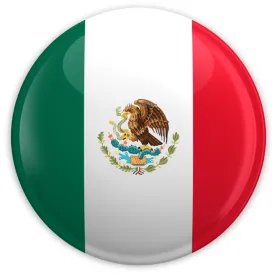On July 12, 2019, the 2019-2024 National Development Plan (Plan Nacional de Desarrollo, “PND”) was published in the Federal Official Gazette (Diario Oficial de la Federación, “DOF”).
The PND’s purpose is to specify the national objectives, strategy, and priorities for Mexico’s comprehensive, equitable, inclusive, and sustainable development.
Main Points of the PND
I. On the Economy
The main economic objectives are:
|
• |
To stimulate growth and maintain the country’s healthy finances; |
|
|
• |
To respect existing agreements signed with previous administrations, and to boost national and foreign private investment; and |
|
|
• |
To utilize Petróleos Mexicanos (PEMEX) and the Federal Electricity Commission (Comisión Federal de Electricidad, “CFE”) as engines of national development. The PND prioritizes the rehabilitation of existing refineries and the building of new ones, as well as the modernization of the electricity generation facilities owned by the state (hydroelectric plants). |
It is important to highlight that the PND does not mention anything on renewable energy (neither solar, photovoltaic, nor wind).
II. Regional Projects
Principales proyectos regionales que se busca implementar durante el presente sexenio:
|
• |
The Mayan Train. This infrastructure project will have a route spanning 1,525 km and will be built through the states of Chiapas, Tabasco, Campeche, Yucatan and Quintana Roo. It will connect the main cities and tourism sites of the Yucatan Peninsula, have 15 stations, and require an investment MX$120-150 billion from public, private, and social sources. |
|
|
• |
Felipe Angeles Airport in Santa Lucia. This project will add to the airport infrastructure of the country’s central region, and a third terminal to Mexico City’s Benito Juárez International Airport will be built. The environmental impact authorization procedure of the project was favorably resolved by the Ministry of the Environment and Natural Resources (Secretaría de Medio Ambiente y Recursos Naturales) on July 17, 2019. However, it is important to mention that several Amparos have been filed, for which (in some cases) federal judges have ordered the definitive suspension of the works, since the project still does not have all of the environmental authorizations required in addition to the environmental impact authorization. |
|
|
• |
Program for the Development of the Tehuantepec Isthmus. This project aims to modernize the Tehuantepec Isthmus railway, and the ports of Coatzacoalcos in Veracruz, and Salina Cruz in Oaxaca; and to offer cargo, transport, storage, and packaging services, promoting the growth of the regional economy while respecting the history, culture, and traditions of the Isthmus of Oaxaca and Veracruz. |
|
|
• |
Several programs focused on achieving food self-sufficiency and rescuing Mexico’s agricultural activity, i.e., farming. |
III. Politics and Government
The following political objectives have been set:
|
• |
To eradicate corruption in the public sector; |
|
|
• |
To install a participatory democracy and submit for public input the governmental actions that affect society; |
|
|
• |
To establish a mechanism for a revocation of mandate (revocación de mandato); and |
|
|
• |
To guarantee the right to work, housing, security, education, and health care. |
IV. Science and Technology
The federal government has established as an objective the promotion of scientific and technological research, and the support of students and academics through scholarships and other incentives.
V. Social Policy
The objective is to develop the general well-being of the population; therefore, the regional projects and sector programs seek to provide economic support to senior citizens, persons with disabilities, low-income minors and young people, and native communities, through the following programs:
|
• |
Senior Citizen Assistance Program; |
|
|
• |
Pension for Persons with Disabilities Program; |
|
|
• |
Benito Juarez National Scholarship Program; and |
|
|
• |
Young People Building the Future. |
VI. Sports: Health, Social Cohesion, and National Pride
Main objectives of the sports policy:
|
• |
To apply transversal policies for physical activity in schools, work centers/offices, and public spaces; |
|
|
• |
To promote sports for people with disabilities; |
|
|
• |
To promote the formation of future athletes; and |
|
|
• |
To support outstanding athletes in various sports. |
According to Planning Law Article 21 Ter, national development plans must specify the strategies to carry out the actions to achieve the objectives mentioned above, as well as the performance indicators and goals to monitor the achievement of such objectives. The published PND does not address these two requirements.




 />i
/>i

